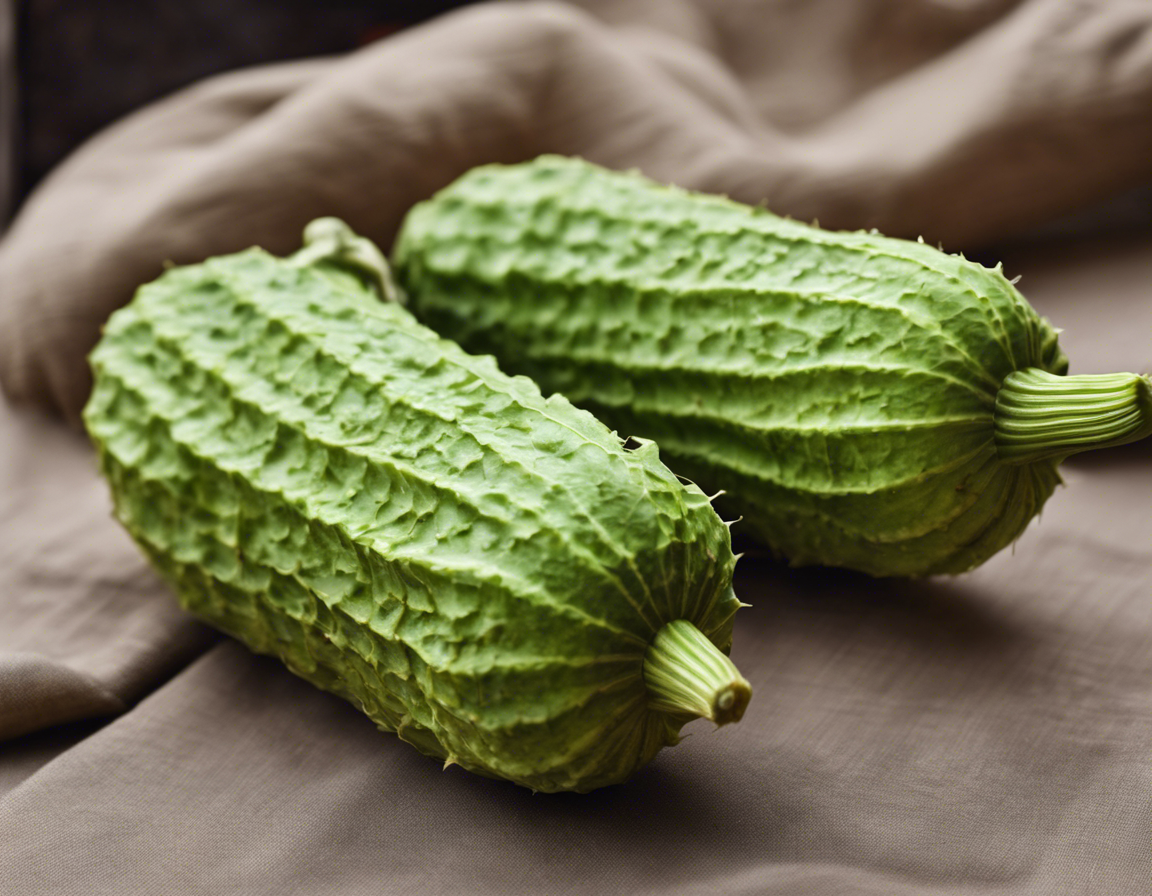Exploring the Hindi Name of Bitter Gourd
Bitter Gourd, also known as bitter melon or Momordica charantia, is a unique vegetable with a distinctively bitter taste. In Hindi, this vegetable is commonly known as “karela”. While the bitterness might not be palatable to everyone, the health benefits and versatility of this vegetable make it a popular choice in many Indian households.
Understanding the Nutritional Profile of Bitter Gourd
Before delving into the Hindi name for Bitter Gourd, let’s first understand the nutritional profile of this vegetable.
Bitter Gourd is low in calories but high in vitamins and minerals. It is an excellent source of vitamin C, vitamin A, and folate. Additionally, it contains potassium, iron, and dietary fiber, making it a nutritionally dense vegetable.
Moreover, Bitter Gourd is loaded with antioxidants and anti-inflammatory compounds, making it a valuable addition to a healthy diet.
Unveiling the Hindi Name for Bitter Gourd: “Karela”
In Hindi, Bitter Gourd is commonly known as “karela”. The term “karela” is derived from the Sanskrit word “karavellaka”, which translates to “gourd.” This name perfectly encapsulates the unique gourd-like shape of the Bitter Gourd.
Culinary Uses of Bitter Gourd in Indian Cuisine
Bitter Gourd, or “karela,” holds a special place in Indian cuisine. Despite its bitter taste, this vegetable is widely used in various dishes to add depth and flavor.
Here are a few popular ways Bitter Gourd is prepared in Indian cooking:
1. Stuffed Karela:
- Bitter Gourd is slit and stuffed with a spicy mixture of spices, onions, and chickpea flour before being cooked to perfection.
2. Karela Sabzi:
- Bitter Gourd is thinly sliced and cooked with onions, tomatoes, and a blend of spices to create a flavorful and nutritious side dish.
3. Karela Chips:
- Thin slices of Bitter Gourd are deep-fried until crispy to make a delicious snack or accompaniment to a meal.
4. Karela Juice:
- Bitter Gourd is juiced with a hint of lemon and honey to create a healthful beverage known for its blood sugar-regulating properties.
Health Benefits of Bitter Gourd (“Karela”)
Bitter Gourd, or “karela,” offers a plethora of health benefits, making it a prized vegetable in Ayurveda and traditional medicine systems.
1. Blood Sugar Regulation:
- Bitter Gourd is known to lower blood sugar levels and improve glucose tolerance, making it beneficial for individuals with diabetes.
2. Digestive Health:
- The fiber content in Bitter Gourd aids in digestion and helps prevent constipation.
3. Weight Management:
- Bitter Gourd is low in calories and can be a valuable addition to a weight management diet.
4. Skin Benefits:
- The antioxidants in Bitter Gourd help in maintaining healthy skin and combating signs of aging.
5. Immune Boosting:
- Bitter Gourd is rich in vitamin C and antioxidants that help in boosting immunity.
Frequently Asked Questions (FAQs) about Bitter Gourd (“Karela”)
Q1. Is Bitter Gourd only popular in Indian cuisine?
A1. While Bitter Gourd is widely used in Indian cuisine, it is also a staple in various Asian cuisines, including Chinese and Filipino dishes.
Q2. How can I reduce the bitterness of Bitter Gourd?
A2. To reduce the bitterness of Bitter Gourd, you can try soaking it in saltwater or marinating it in lemon juice before cooking.
Q3. Can Bitter Gourd be consumed raw?
A3. Bitter Gourd can be consumed raw, but it is commonly cooked to reduce its extreme bitterness.
Q4. Is Bitter Gourd safe for pregnant women?
A4. Bitter Gourd should be consumed in moderation during pregnancy due to its blood sugar-lowering properties.
Q5. What are some alternative names for Bitter Gourd?
A5. Bitter Gourd is also known as bitter melon, bitter squash, or balsam pear in various parts of the world.
Conclusion
In conclusion, Bitter Gourd, or “karela,” is a versatile and nutrient-dense vegetable that offers a wide array of health benefits. Whether you enjoy it stuffed, sautéed, or juiced, incorporating Bitter Gourd into your diet can be a flavorful way to boost your health and well-being. So, the next time you come across this unique vegetable in the market, don’t hesitate to give it a try and explore the numerous culinary possibilities it has to offer.

